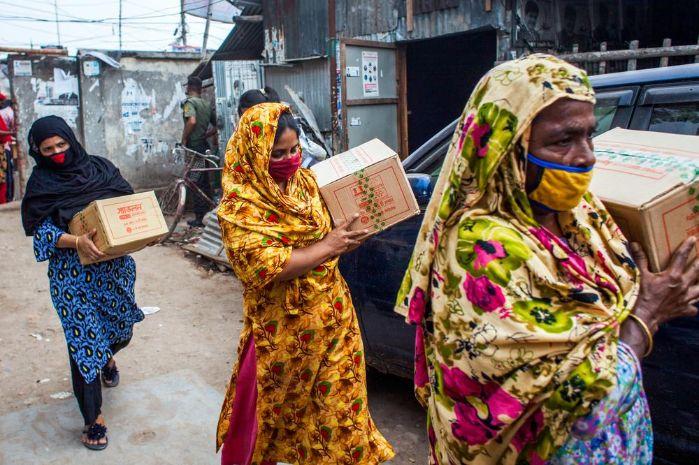Statement delivered by Haoliang Xu at the 76th UN GA High Level Side Event, co-hosted by Multidimensional Poverty Peer Network (MPPN) and the United Nations Economic and Social Commission for Western Asia (ESCWA).
Envisioning a More Equitable Future: Using Multidimensional Poverty Indices as a Policy Tool
September 23, 2021

After decades of reduction in multidimensional poverty, the world now faces an uptick in the number of people living in poverty. UNDP projections show that achievements in key areas such as school attendance and nutrition will be set back by three to six years .
Distinguished speakers and participants,
Covid-19 is disrupting lives and livelihoods, disproportionately impacting the poor and the vulnerable. After decades of reduction in multidimensional poverty, the world now faces an uptick in the number of people living in poverty. UNDP projections show that achievements in key areas such as school attendance and nutrition will be set back by three to six years .
The importance of tracking multidimensional poverty, going beyond income, has never been greater. Even more important is the harnessing of this analysis to turn it into high-impact policies, providing evidence that reversals in human development due to Covid-19 are not a foregone conclusion.
In this regard, and according to new analysis by UNDP and the Pardee Center for International Futures at the University of Denver , a combination of policies and investments in four key areas: governance, social protection, the green economy, and digitalization - known together as the “SDG Push” – can lift approximately 100 million people out of poverty by 2030 compared to the ‘COVID Baseline’.
Ensuring that poverty reduction continues apace is the main priority of the UNDS whose QCPR singles out poverty eradication as its highest priority.
Similarly, poverty eradication is at the heart of UNDP programming. Responding to that urgency, in this ‘decade of action’, UNDP has marshalled resources to meet this challenge. Under the next Strategic Plan, UNDP expects by 2025 to help 100 million poor escape multidimensional poverty and vulnerabilities.
Allow me to highlight key measures taken to foster evidenced-based policy interventions that can help reach that goal:
First, building on its lead support in the preparation socio-economic impact assessments (SEIAs) in countries across five regions, UNDP along with UN Country Teams have supported the preparation of over 120 socioeconomic response plans (SERPs) covering 140 countries. In many of those countries, MPI and related vulnerability indices have been used to conduct assessments and guide the Covid-19 responses. For instance, in Honduras, along with the National Center for Social Sector Information (CENISS) and Oxford Poverty and Human Development Institute (OPHI), UNDP developed a selection and identification process, using a Multidimensional Vulnerability Index, that was key to the rollout of the government’s Bono Unico social protection program . Countries such as Bhutan and Pakistan have used Multidimensional Poverty analysis while conducting their SEIAs.
Second, through training and capacity building, UNDP provides countries with the tools to measure and address multidimensional poverty. UNDP and OPHI developed a Massive Open Online Course (MOOC) on designing a national Multidimensional Poverty Index (MPI). Based on high demand, a second edition of the MOOC was launched in English, French and Spanish in 2021. The second edition includes a dedicated module on the use of MPI in the Covid-19 response.
Third, UNDP, UNICEF and the World Bank are the facilitator agencies for SDG Indicator 1.2.2 on multidimensional poverty measurement . Together with these agencies, and in collaboration with the Multidimensional Poverty Peer Network (MPPN), in every region, UNDP supports countries in designing, updating and using their MPIs, at national and sub-national levels.
Fourth, underscoring the importance of translating the measures and analysis into policy, UNDP and OPHI are collaborating on a forthcoming Handbook on Policy Entrepreneurship, to provide guidance to country teams on using MPIs for policy.
The role that the MPI plays today in measurement and policy making is a testament to the strong partnership between OPHI and UNDP from the outset. Distilling multidimensional poverty assessments tools into policy action are a strong lever to fight against the Covid-19 related socio-economic fallout and reinforce pathways to greater prosperity for all.
Thank you.

 Locations
Locations